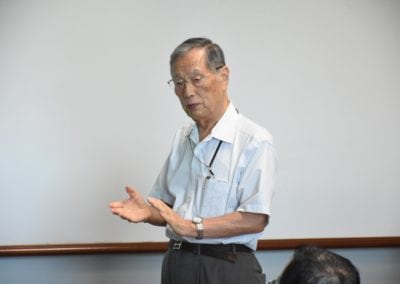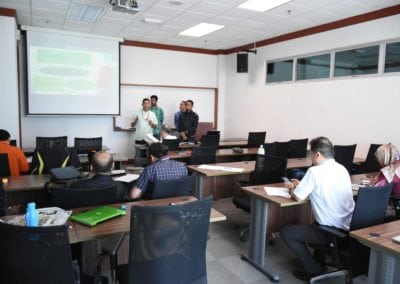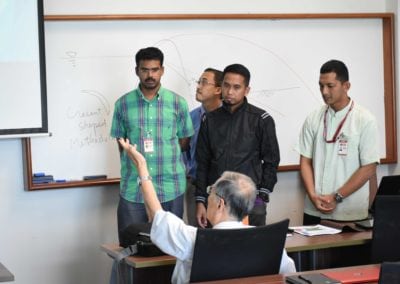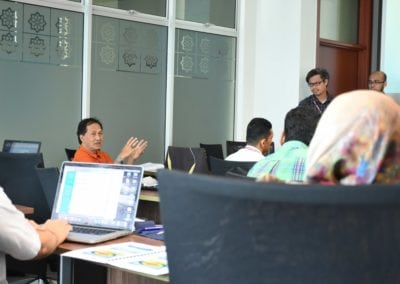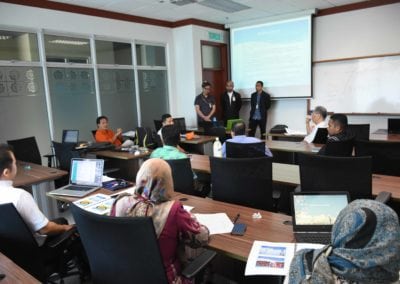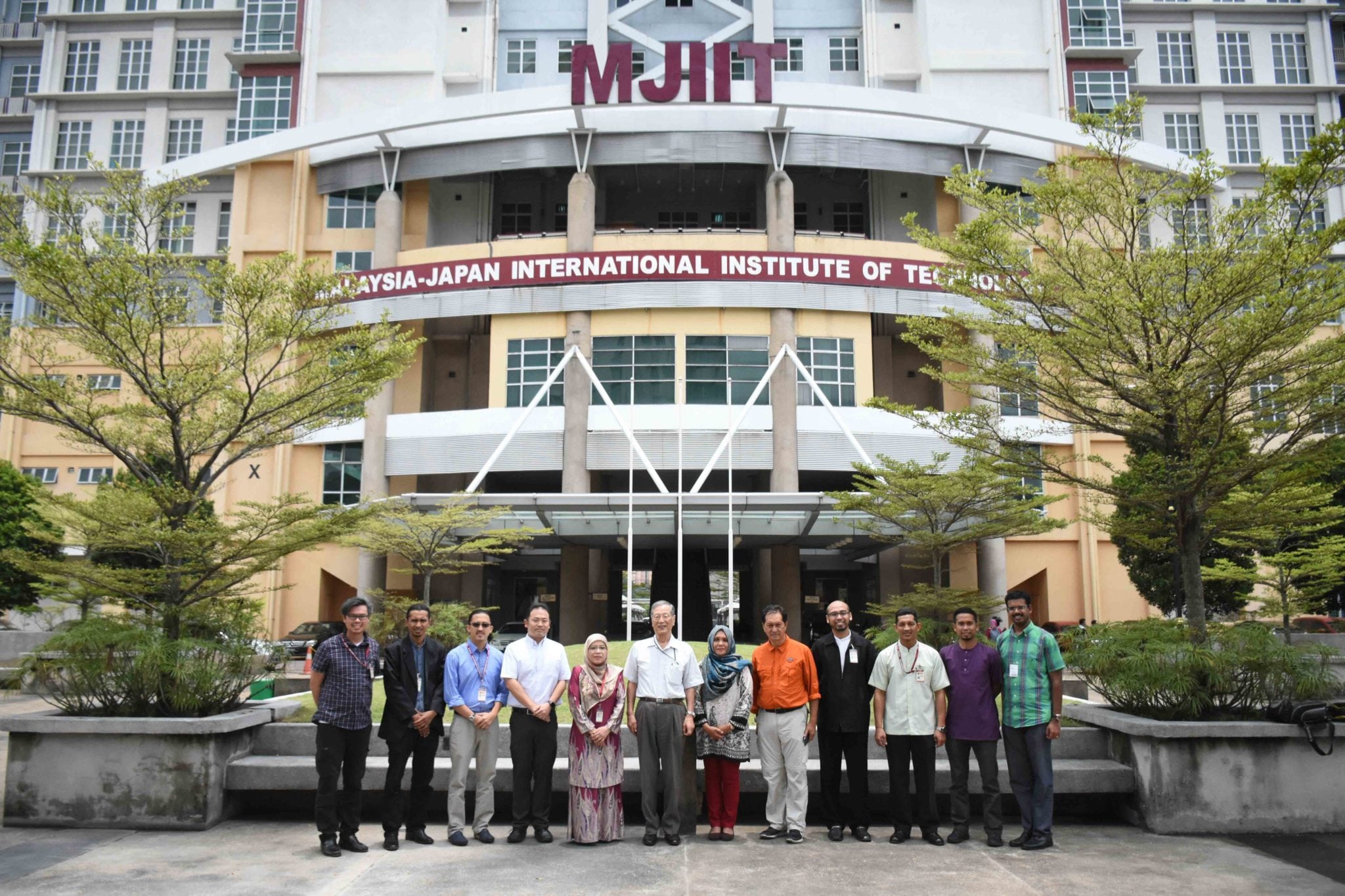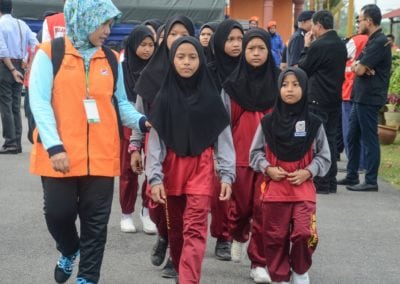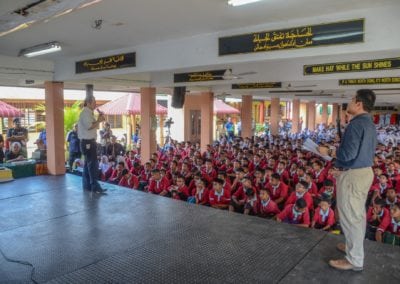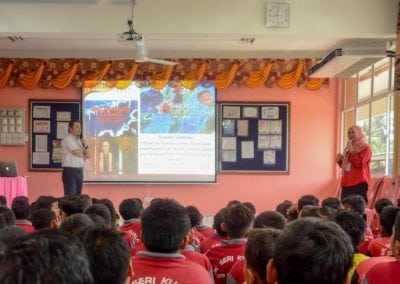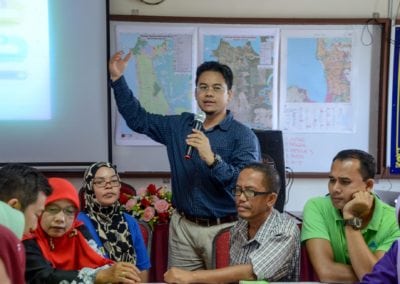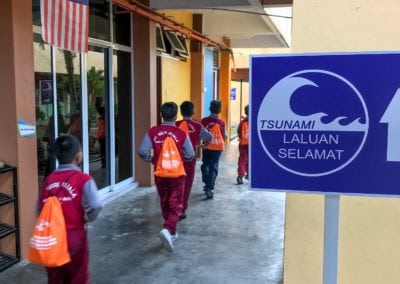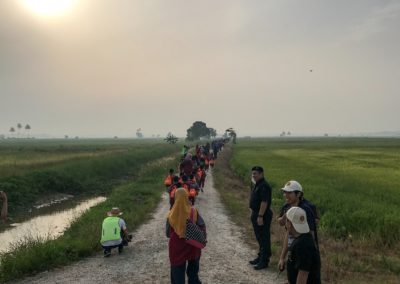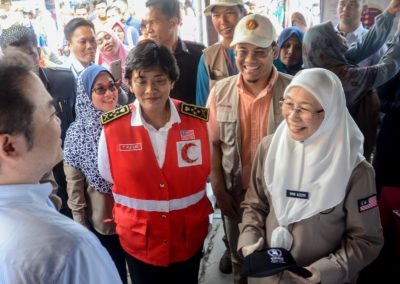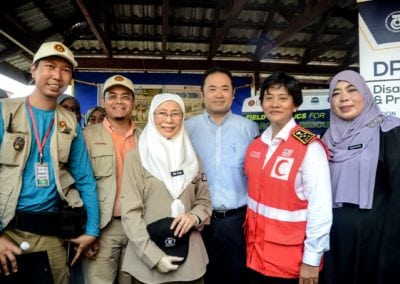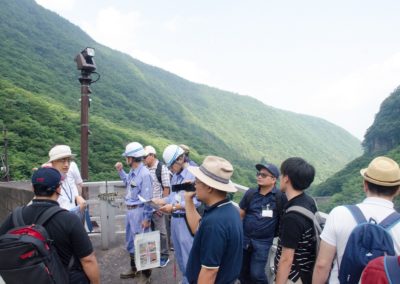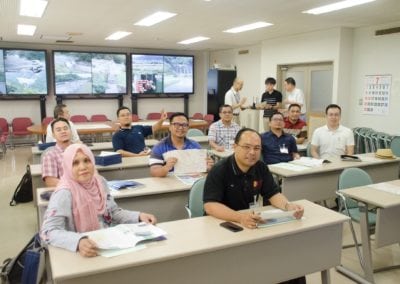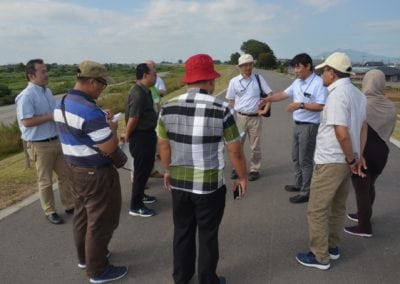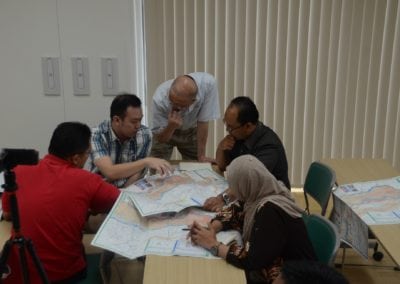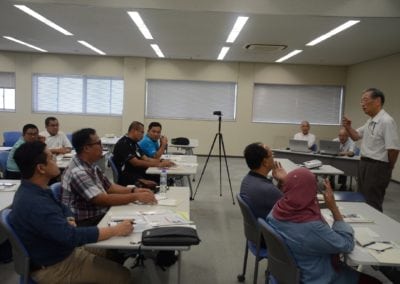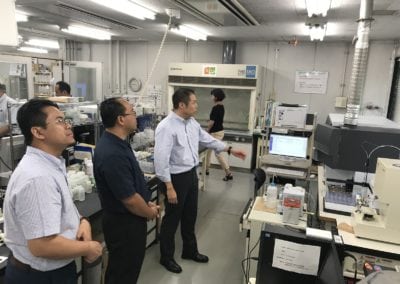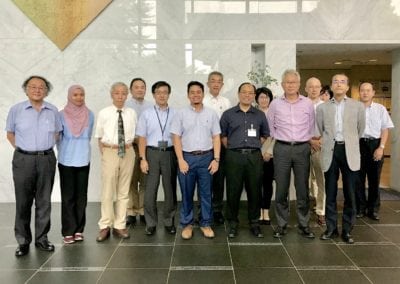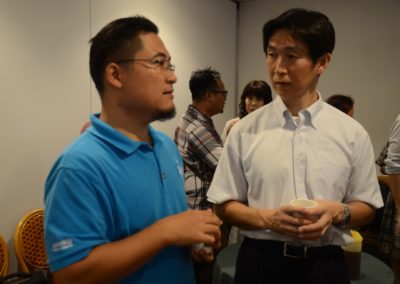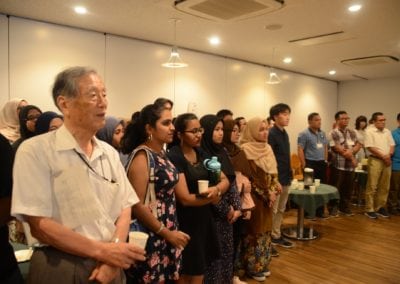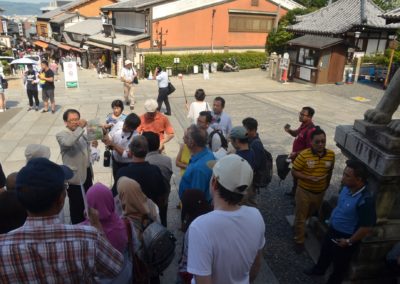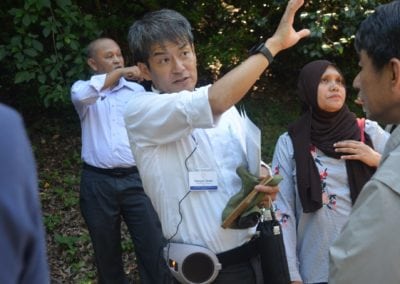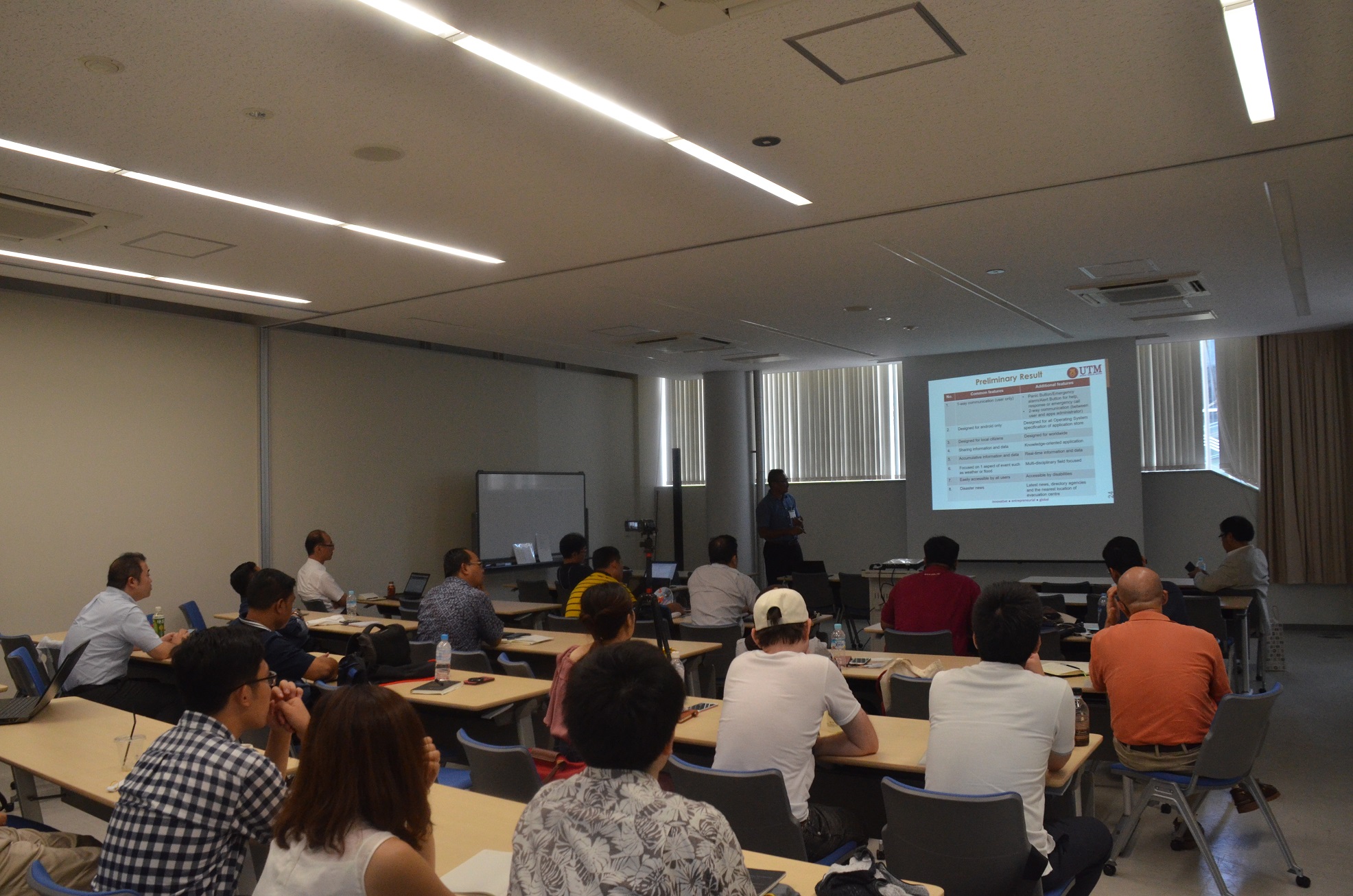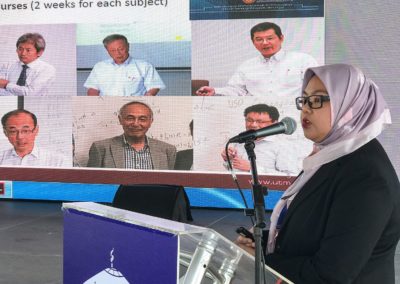
by megatfa | Aug 4, 2019 | News
From 20 July to 3 August 2019, nine MDRM students together with faculty members and strategic partners participated in MDRM Japan Attachment 2019. This program intends to take students out of the classroom after a year of intensive taught program in Malaysia to take part in a 2-week field program in Japan to visit DRM sites and have discussions with disaster managers and community leaders.
The program consists of Kanto (Tsukuba, Tokyo) and Kansai (Kyoto, Kobe, Osaka) programs with hands-on topics ranging from flood control, sediment disaster prevention measures, remote sensing technology for DRR, community based DRR, cultural heritage DRR and emergency medicine.
All MDRM students are eligible to join the Japan Attachment program upon completion of taking the required taught courses in the MDRM program.

by megatfa | May 10, 2019 | News
May 9, 2019 – Malaysia-Japan International Institute of Technology (MJIIT), UTM Kuala Lumpur hosted the kick-off meeting for Collaborative Education Program for Sustainable Environmental Engineering Network (CEP-SEEN). The kick-off meeting was chaired by Professor Dr. Zainuddin Abdul Manan, UTM Deputy Vice-Chancellor (Academic & International) and attended by Mr. Murakami Yusuke, AUN/SEED-Net Deputy Chief Advisor, Mr. Shimazu Hideki, AUN/SEED-Net Project Coordinator, Ms. Wanichar Sukprasertchai, Ms. Kanokpan Paladech and Ms. Paveenut Supanaroek from the AUN/SEED-Net office.
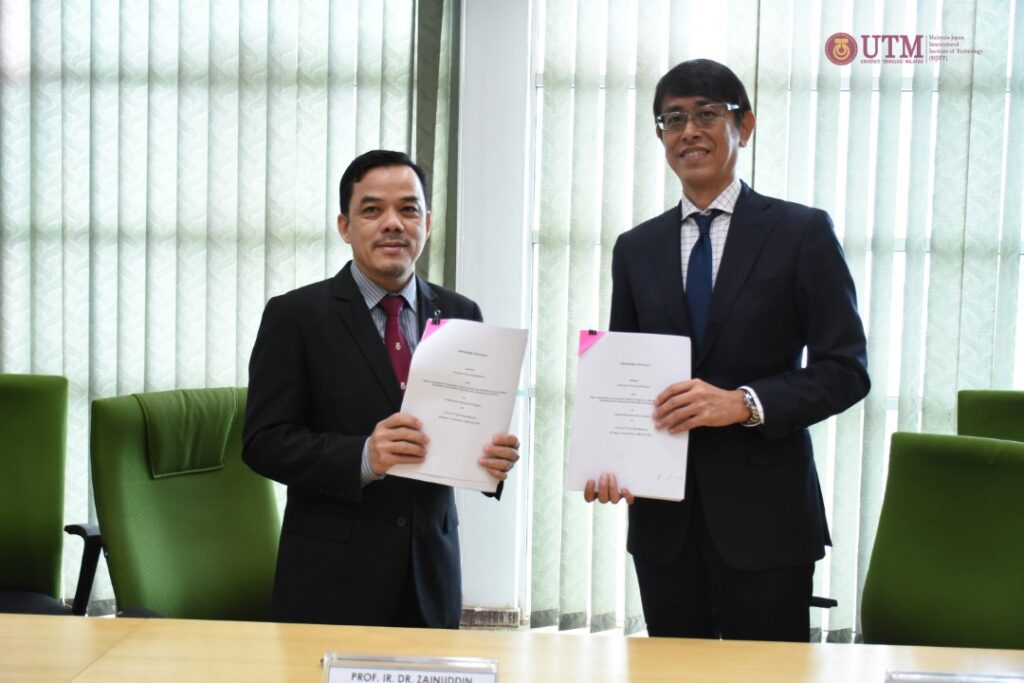
Operated as a consortium, the CEP-SEEN consists of 5 partners from Malaysia, Indonesia and Japan:
- MJIIT, Universiti Teknologi Malaysia (UTM), Malaysia
- University of Tsukuba (UT), Japan
- Institut Teknologi Sepuluh Nopember (ITS), Indonesia
- Nippon Koei Co., Ltd. (NK), Japan
- Indah Water Konsortium Sdn. Bhd. (IWK), Malaysia
Under the auspices of the AUN/SEED-Net, the CEP-SEEN consortium highly encourages prospective students to experience studying at UTM-MJIIT and the opportunities it provides in facilitating the exchange of scientific, academic and technical knowledge through joint educational program focusing on the key area of Sustainable Environmental Engineering. All expenses will be fully covered under the prestigious scheme.
CEP-SEEN project receives the AUN/SEED-Net funding support worth RM 1.8 million for the duration of 45 months. The project is led by Assoc. Professor Dr. Ali Yuzir, the Deputy Director of Disaster Preparedness and Prevention Centre (DPPC), MJIIT. Whereas, the project team members from UTM-MJIIT include: Assoc. Professor Dr. Shahrum Shah Abdullah, Assoc. Professor Dr. Norhayati Abdullah, Dr. Mohd Hakim Ab Halim, Dr. Aznah Nor Anuar, Assoc. Professor Dr. Koji Iwamoto, Assoc. Professor Dr. Hirofumi Hara, Ms. Mazliza Aini Abdul Majid and Mr. Syafiq Yazid.
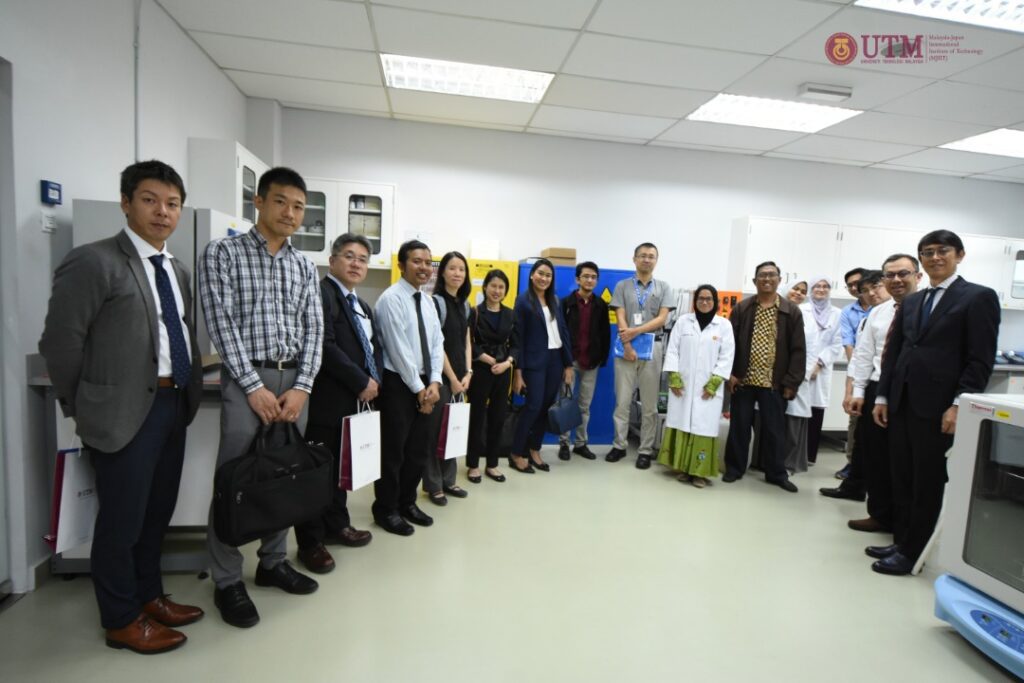
The CEP-SEEN consortium offers scholarship that includes monthly stipend, research and mobility support for successful candidates who enrolled into full-time research-based academic programs, either Master of Philosophy (MPhil) or Doctor of Philosophy (PhD) in the field of Environmental Engineering. Main study period will take place in UTM Kuala Lumpur with attachment in Japan and Indonesia. The research attachment opportunity will allow the CEP-SEEN scholars to access the research infrastructures and academic environment at the partnering Universities and Industries.
UTM-MJIIT and the consortium members welcome candidates from the ASEAN countries (excluding Malaysia, Brunei and Singapore) to submit their scholarship application. Under this program, the CEP-SEEN scholars will be able to explore and expand their Environmental Engineering research on relevant topics to be able to translate knowledge and technology they learnt to society upon their graduation. Additionally, throughout the years of study, CEP-SEEN scholars will have the opportunity to expand their professional network and friendships and bring these connections back to their home countries to better address the environmental related issues and challenges confronting the ASEAN region today.
You may find detailed information regarding the CEP-SEEN scholarship through the link below:
MJIIT Website: https://mjiit.utm.my/cepseenpgscholarship/
Facebook Link: https://bit.ly/2RkqxbL
Should you require any further information, please feel free to contact CEP-SEEN secretariat at: cepseen@utm.my
Prepared by: Dr. Mohd Hakim Ab Halim, MJIIT and AP Dr. Norhayati Abdullah, Office of UTM International
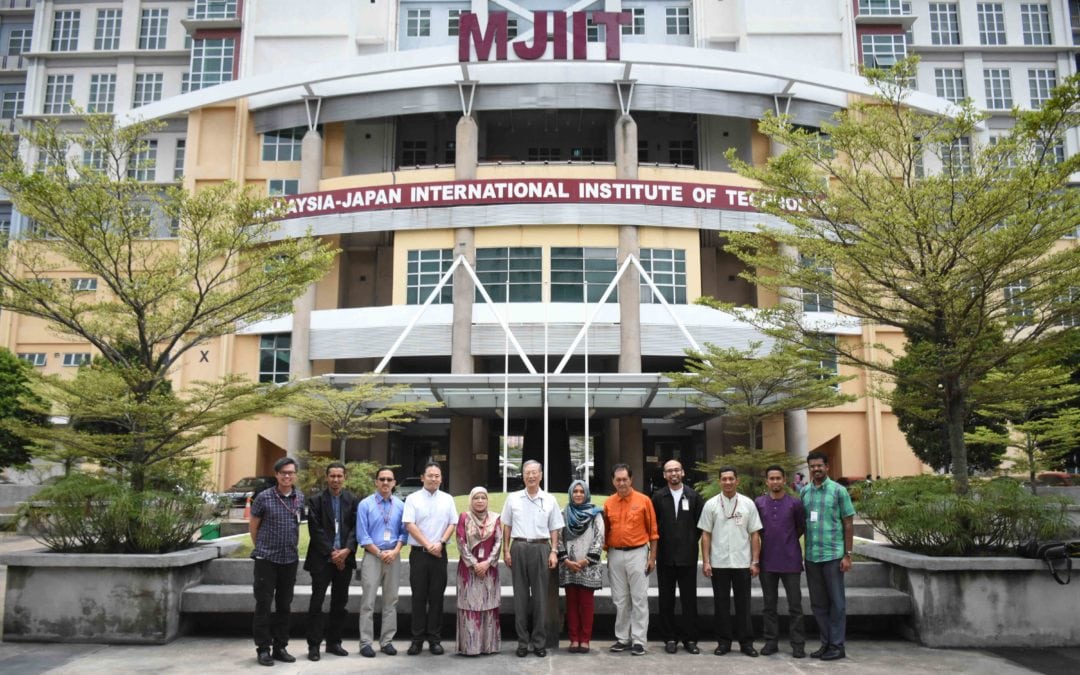
by megatfa | Sep 28, 2018 | News
On 18 September, the third batch students of MDRM arrived at UTM KL to be greeted by Professor Dr. Masafumi Goto, Director or MJIIT’s Disaster Management Program – who gave the opening speech to encourage the new students to achieve the most out of their year to learn from prominent Malaysian and Japanese experts on disaster risk reduction and management (DRRM) issues in the region.
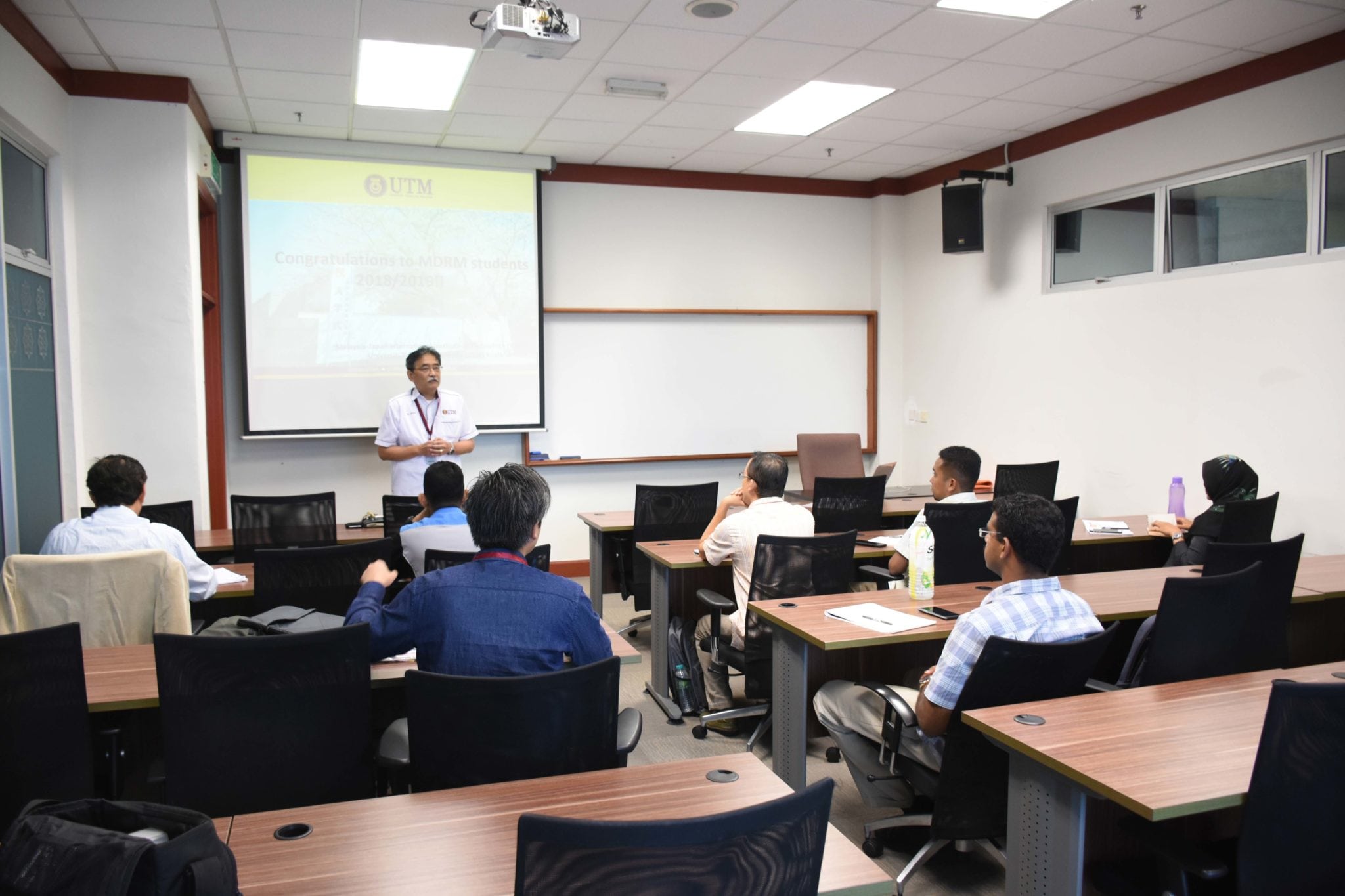
The first course on Integrated Disaster Risk Management was lectured by Kuniyoshi Takeuchi, Professor Emeritus of Yamanashi University and Founding Director of International Centre for Water Hazard and Risk Management (ICHARM). Prof. Takeuchi introduced the Transdisciplinary Approach (TDA) for DRRM that is not only an approach for research, but also as an implementation methodology for science-based decision making that can truly bring a societal change to build disaster resilience of countries. The concept of MDRM program that targets DRRM practitioners is based on TDA that makes the program applicable on the field, in actual situations.
One of the uniqueness of MDRM is the co-learning environment between lecturers and students as well as among students who are all experienced DRRM professionals. MDRM also provides a platform for experienced officials, such as from the National Disaster Management Agency (NaDMA) joining as Certified Professional Training (CPT) student, to share their know-hows and exchange views on various disaster management issues in an academic setting. The partnership and friendship built in such setting is another aim of the program in establishing a network of DRRM professionals, so that they can work better together in the future.
5 core and 5 elective courses will be administered in the 2018/2019 academic year bringing DRRM experts, researchers and other stakeholders from Malaysia, Japan and ASEAN countries. MDRM is offered as a full-time taught course (intake in September) or as CPT in which professionals may choose a topic of their interest to strengthen their knowledge on a specific subject.
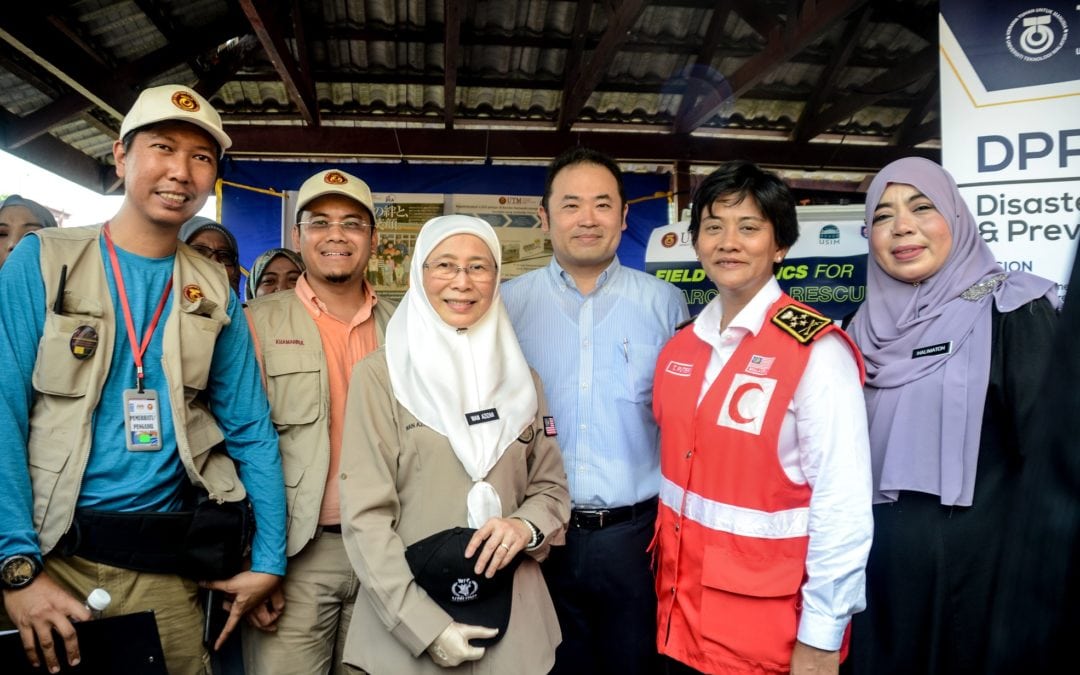
by megatfa | Aug 30, 2018 | News
On 6-7 August, DPPC members, Dr. Khamarrul Azahari Razak, Dr. Aznah Nor Anuar, Dr. Nor Eliza Alias and Dr. Shohei Matsuura joined the National Disaster Management Agency (NaDMA) in implementing a series of program that included tsunami evacuation exercise with residents of Kota Kuala Muda, Kedah that experienced the 2004 Indian Ocean Tsunami.
Originally planned as one of the project components of UNDP’s project, “Strengthening School Preparedness for Tsunami in Asia and the Pacific,” funded by the Japanese government, the program consisted of public lectures, risk assessment exercise, evacuation drill and community consultation meetings.
On 6 August, Dr. Matsuura gave 2 public talks to local government, community leaders and school children on the Japanese experience of tsunami response, especially from the 2011 East Japan Earthquake and Tsunami. He explained on how to anticipate tsunami damages beyond what is simulated and even 40-50cm waves can drown people, particularly children.
Dr. Khamarrul led the risk assessment exercise by incorporating the Disaster Imagination Exercise (DIG) used in Japan. Together with community leaders and NGOs, identified high-risk areas as well as priority preparedness actions that the communities need to take in order to improve response to future tsunami events.
On 7 August, Dr. Aznah and Dr, Eliza took part in providing technical inputs to the evacuation drills conducted by NaDMA and the local schools. Although there are several areas to be improved, they concluded that the exercise was organized well and that the drills need to be followed up by NaDMA, but putting more emphasis on empowering the local government and communities.
MJIIT opened a booth to introduce DRM practices from Japan (specifically for tsunami) and research activities that are currently being implemented by UTM. Deputy Prime Minister, Datuk Seri Wan Azizah, visited the booth expressing interest in MJIIT’s professional training and hands-on research in DRR for Malaysia.
DPPC plans to continue to support DRM agencies, including NaDMA, through a transdisciplinary approach that links science with policy/action on the fieldK and various stakeholders from different sectors in DRM.
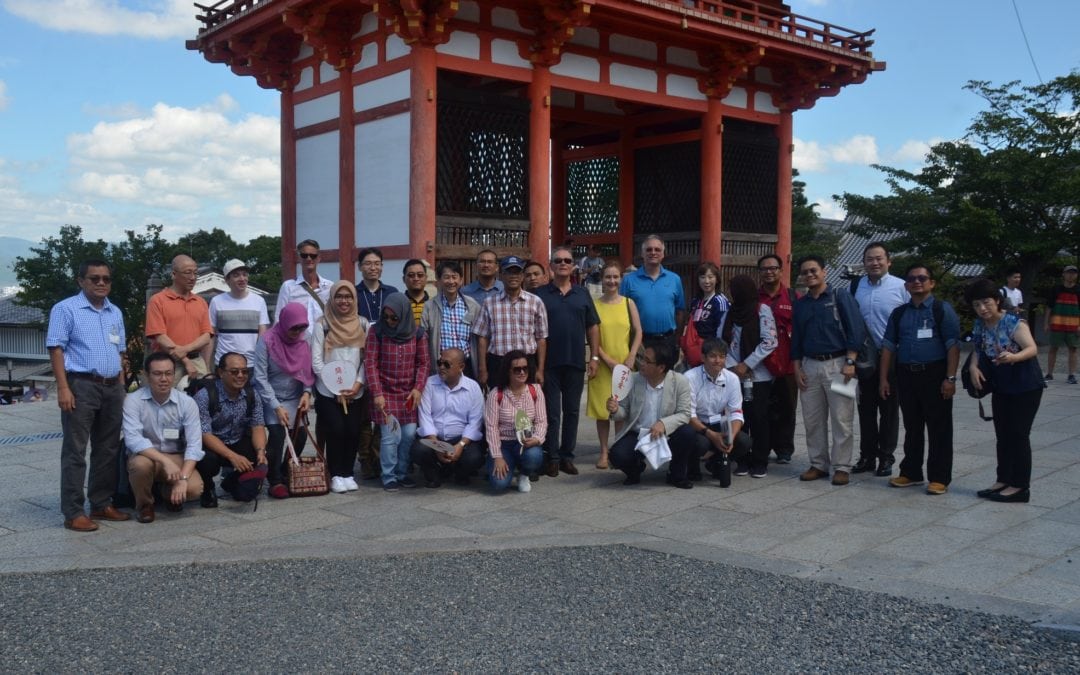
by megatfa | Aug 29, 2018 | News
MDRM students joined the Japan Attachment 2018 program again this year from 22 July to 2 August to experience how disaster risk management is actually conducted in Japan after a year of in-class lectures by Japanese professors and experts during the 2017/2018 academic year.
Soon after arriving at Tokyo Narita Airport, students and faculty members were taken to Tsukuba City where they had visited some of the renowned universities and research institutes, including Tsukuba University, National Research Institute for Earth Science and Disaster Resilience (NIED) and International Center for Water Hazards and Risk Management (ICHARM) of the Public Works Research Institute (PWI).
1st week – Kanto (East Japan) Program:
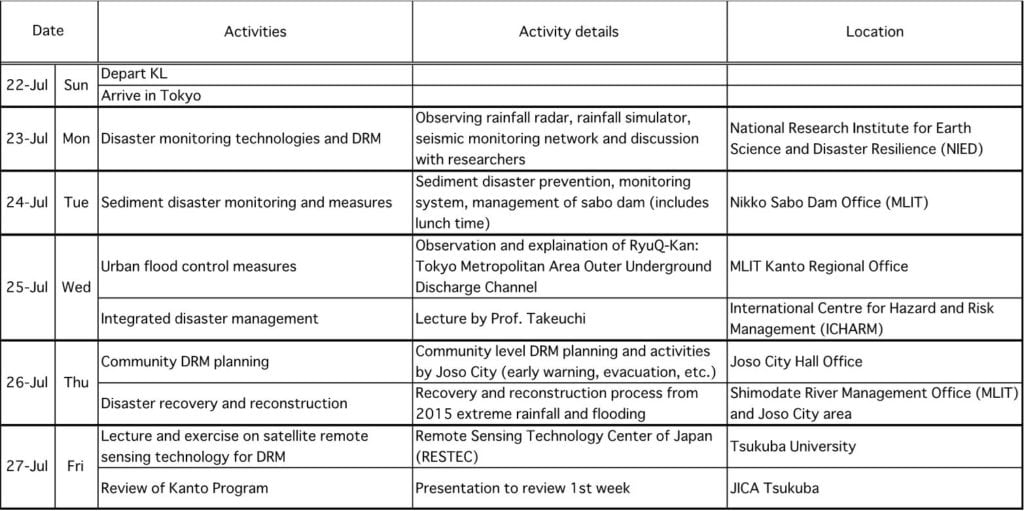
At NIED, the students were able to observe their earthquake monitoring system and experience the world largest rainfall simulator system, demonstrated by Dr. Naoki Sakai, MDRM lecturer. NIED can be considered as an example of how research institutes can partner with government of private companies to work together in solving DRM issues.

The participants then visited the Nikko Sabo Dam Office where officers of Kanto Regional Office of the Ministry of Land, Infrastructure, Transport and Tourism (MLIT) closely monitored the Inari River that is protected by different types of sabo dams. The hardware measures have proven to be effective in protecting Nikko City, a popular tourist destination, and several world heritage sites located downstream from debris-related disasters.
On the following day, Ryu-Q-Kan, the massive underground discharge channel that protects the Kinu and Tone river basins including many low-lying areas in Tokyo was visited. As other visitors, the participants were awed by this underground parthenon that operates on an average 7 times per year during the raining season in Japan.
While the Kinu River Basin suffered a historical flooding event in 2015, the visit to Joso City and Shimodate River Management Office demonstrated good practice on how central and local governments could collaborate in disaster response and recovery. Each has also taken unique approaches in working with the local residents in disaster prevention awareness and activities.
The participants enjoyed their reunion with Prof. Takeuchi and Prof. Egashira, both MDRM lecturers, at ICHARM where they received lectures about the latest situation in Central Japan where a series of flooding took lives of over 200 people. They also visited the hydraulics experimental laboratory after the lectures.
With Tsukuba City being the home of Japan Aerospace Exploration Agency (JAXA), the session with Remote Sensing Technology Center of Japan (RESTEC) provided a crash course for utilizing satellite remote sensing technology for disaster prevention planning.
In addition, some of the participants were able to visit Nippon Koei Research Institute, one of the largest civil engineering consulting companies in Japan, and observe its experiment facilities. Discussions were held on possible student internships and join research.
In the evening, a dinner reception was organized by Tsukuba University in which participants were able to reunite with other MDRM lecturers, partners and MJIIT students who are currently studying there.
In the second week of the Japan Attachment, the participants moved to Kansai area in Kobe and Kyoto.
2nd week – Kansai (West Japan) Program:

The visit to Disaster Management Center of Hyogo Prefectural Office gave another glimpse of local government’s effort in sustainable reconstruction and recovery after the 1995 Great Hanshin Awaji Earthquake that created the “self-help” and “mutual-help” concepts.
Students from medical background especially appreciated the talk by Dr. Shinichi Nakayama, Director of Hyogo Emergency Medical Center (HEMC), the regional DMAT hub that was established after the 1995 Earthquake. The Emergency Medical Information System (EMIS), in particular, was deemed important and applicable in hospitals in Malaysia.
Kyoto for owning 17 world heritage sites is the most suitable place to learn about cultural heritage protection and disaster prevention. Jointly organized by UNESCO, Professor Takeyuki Okubo of the Institute of Disaster Mitigation for Urban Cultural Heritage (R-DMUCH), Ritsumeikan University guided the participants through Kiyomizu Temple and Higashiyama Ward on how community-based disaster management has been functioning in the area.
Lastly, MJIIT-Kyoto University Joint Seminar was again organized this year with support from Professor Takara, Dean of the Graduate School of Advanced Integrated Studies in Human Survivability (GSAIS), Kyoto University and participated by Professor Michinori Hatayama and Professor Tetsuya Sumi, MDRM professors, and Professor Takahiro Sayama of Disaster Prevention Research Institute (DPRI).
Full time MDRM students are eligible to join the fieldwork programmed in the Japan Attachment that is funded and implemented every year as JICA Knowledge Co-Creation Program (KCCP), tailor made based on students’ background and interests.
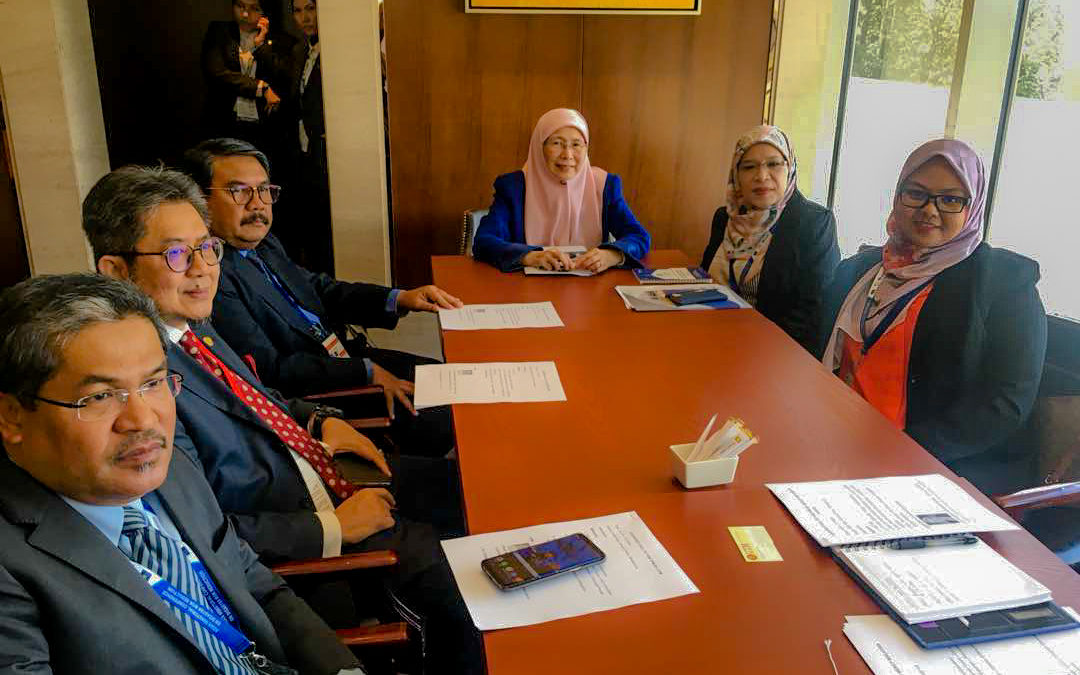
by megatfa | Jul 19, 2018 | News
Two UTM faculty members of the Disaster Preparedness and Prevention Centre (DPPC) of the Malaysia-Japan International Institute of Technology (MJIIT), Professor Dr. Aminaton Binti Marto and Dr. Faizah Che Ros, accompanied by JICA Expert and Associate Professor Dr. Shohei Matsuura, participated the Asian Ministerial Conference on Disaster Risk Reduction (AMCDRR) in Ulaanbaatar, Mongolia as members of the Malaysian government delegation.
AMCDRR, organized by United Nations Office for Disaster Risk Reduction (UNISDR) from 3rd to 6th July 2018, has brought together over 3,000 high-level officials, researchers and practitioners in the field of disaster risk reduction (DRR) from the Asia-Pacific region to discuss about the implementation of the Sendai Framework for Disaster Risk Reduction (SFDRR: 2015-2030), the global agenda for DRR.
During the conference, Dr. Faizah Che Ros presented on MJIIT’s disaster program and how its education/professional training, research and field activity programs have been contributing in building disaster resilience in Malaysian societies in close cooperation with government agencies including the National Disaster Management Agency (NaDMA), Malaysia Civil Defense Force (APM) and Department of Irrigation and Drainage (DID).
Professor Aminaton and Dr. Faizah also made a courtesy call to Datuk Seri Dr. Wan Azizah Wan Ismail, Deputy Prime Minister of Malaysia during the conference in Ulaanbaatar. The Deputy Prime Minister expressed strong interest in the Master of Disaster Risk Management (MDRM) and Certified Professional Training (CPT) programs and acknowledging the benefits of strong partnership with Japanese universities for human capacity building for DRR in Malaysia.







